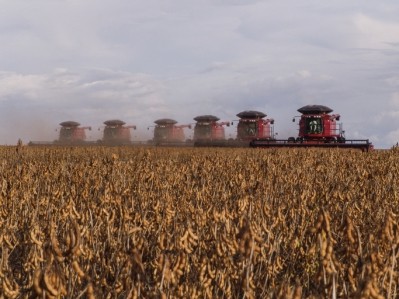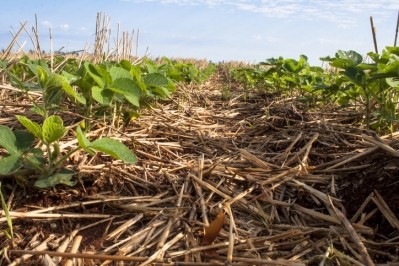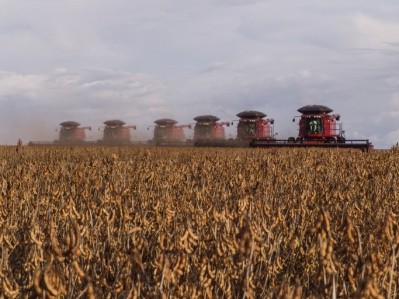New green bonds scheme to finance responsible soy production

The market-led scheme, which is managed by Sustainable Investment Management (SIM), a boutique investment firm, with offices both in London and Brazil, is about providing low-interest credit lines to Brazilian soy farmers who commit to using degraded pasture-lands, areas that were previously used for extensive cattle ranging, and avoid clearing forests and native grassland for agriculture.
SIM said the new Responsible Commodities Facility is looking to provide around US$1bn over the next four years to fund responsible expansion of soy [and corn].
The fund is being raised internationally, said Pedro Moura Costa, CEO of SIM.
“There are some concessional funds involved, for instance, the &green fund is an anchor investor, but the majority will come from institutional investors who want to invest in a risk adjustment instrument that gives them proper returns,” he told FeedNavigator.
The only way to ensure rapid, large-scale environmental change is through the involvement of financial markets, he said. Progress that is dependent on grants and development finance from governments will always be limited, he added.
“This is a financial mechanism to promote the responsible expansion of soy. While it fits with all the desires of the environmental sector, it also meets the needs of an agricultural sector that wants more land in order to expand and a Brazilian government that does not want any interference with the right to expand [soy production], [a policy that a lot of stakeholders] agree with along as it is done in a responsible way.”
Bruno Pozzi, director of the European office of the UN’s Environment Program (UNEP), which is supporting this market-led low interest credit-line model, said the UNEP believes such an approach is an innovative and much-needed way of unlocking private capital at scale to address the environmental challenges linked to soy production.
Delivery mechanism for the goals of the Cerrado Manifesto
Moura Costa spoke to us about the initial prompt for the bonds scheme.
“Demand for soy is continuing to expand all over the world, especially in China.
"Around two years ago, the environmental movement in Brazil created the Cerrado Manifesto, which was signed by nearly 200 organizations from NGOs to large consumer goods companies. That was essentially a plea for traders and producers to direct this expansion of soy away from native habitats, in particular in the area of the Cerrado grasslands, to areas that are already cleared and are available for soy cultivation.
“The objective of our facility is to act as a delivery mechanism for the objectives of the Cerrado Manifesto, to provide financial incentives for farmers to go in that direction.”
Brazil has around three times more land already cleared that could be used for the expansion of soy production that what is needed by industry over the next 10 years, he stressed.
“The projection is that the soy sector will require about 6 to 8 million hectares between now and 2028, but there is about 18m hectares of abandoned, degraded pasture-land that could be used for soy cultivation."
The scheme is timely, he said, as the Brazilian government has just announced this year that it will reduce the amount of subsidized credit lines for crop finance.
“We are going to become one of the most competitive credit lines on the market to those that commit to the objectives of the Cerrado Manifesto.
“The way that farmers will access the low-interest credit is through the partnerships we are forging with companies that can aggregate vast numbers of agriculture loans. These companies will include soy traders, agricultural cooperatives and agricultural input providers; all of those have direct contact with hundreds of farmers, and we are partnering with them so that they will be the conduit of these loans to the farmers themselves.”
The first US$300m bond issuance is planned for the planting season of 2020.
“The credit lines will become available early next year.”
Incentivizing farmers
How easy is it to cultivate soy on already degraded pasture-land?
“It takes a bit more investment and it takes a bit longer, maybe three to four years, for these areas to reach the productivity level of areas that have been under cultivation for a long time.
“It is really a financial decision for the farmers. They will only cultivate soy on such land if it makes economic sense for them and, hence, the need for low-interest credit lines,” said Moura Costa.
However, also to be taken into account, he said, is the fact that the degraded land is cheaper than prime agricultural land. “Farmers put all of those factors into their calculations.”
Soy cultivation is already occurring on such degraded pasture-land; the shift is underway. “What we are doing is providing low-interest credit lines to accelerate this process.”
This facility is targeted at medium-sized Brazilian farmers. “It would more difficult to work with smallholders. They tend to have a low credit rating and they are less sophisticated in terms of being able to engage in this kind of credit line. The smallholders will continue to access the official Brazilian subsided credit lines, which will remain available for this group.
“At the same time, the large landowners are able to access international finance directly, so we are not competitive for them.
“So it is really the medium size farmers we are focusing on, which, in Brazil, is anything from 1,000 and 5,000 hectares [in terms of scale].”
Ensuring transparency and credibility
To participate in the facility, producers will be vetted according to eligibility criteria based on commitments to protect Cerrado vegetation and compliance with national legislation, said SIM. It said adherence to these commitments would be independently verified by external companies, and will be overseen by an environmental committee of producers, buyers, NGOs and financial organizations.
A responsible commodities registry will keep records of the volumes and source of responsible commodities produced, as well as trace the ownership of these commodities along the supply chain, added SIM.









